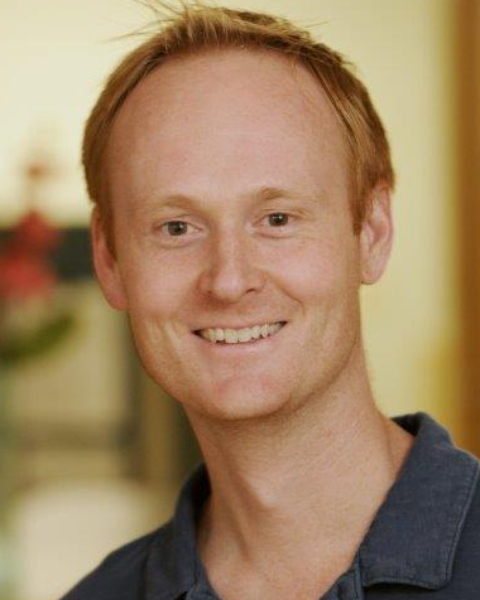QP 22 - Phys 12: Dosimetry and Response Prediction
1126 - CT Dosimetry in Radioembolization: Image Acquisition Considerations
Wednesday, October 2, 2024
8:10 AM - 8:15 AM ET
Location: Room 145

Alasdair Syme, PhD
Nova Scotia Health Authority
Halifax, NS
Presenter(s)
A. Syme1, R. Abraham2, A. Arepally3, S. C. Kappadath4, A. Verma3, D. Dobrowski3, A. S. Kennedy5,6, and E. C. Henry III1; 1Department of Medical Physics, Nova Scotia Health Authority, Halifax, NS, Canada, 2Dalhousie University / QEII Health Sciences Centre, Halifax, NS, Canada, 3ABK Biomedical Inc., Halifax, NS, Canada, 4University of Texas MD Anderson Cancer Center, Houston, TX, 5Sarah Cannon Research Institute, Nashville, TN, 6Sarah Cannon Cancer Institute, Nashville, TN
Purpose/Objective(s): There exists an unmet need for improved post-implant dosimetry in transarterial radioembolization (TARE). CT-based dosimetry has the potential to overcome certain limitations of PET or SPECT based dosimetry (e.g. improved resolution, reduced motion artifacts). A novel radiopaque glass microsphere is being studied in this context. This work looks at the impact of CT image acquisition parameters on the quantification of the radiation dose distribution in TARE. Materials/
Methods: This study involved CT images of both a calibration phantom and patients. The calibration phantom consisted of 7 cylindrical posts (diameter 15 mm, length 40 mm) of different microsphere concentrations (1 – 25 mg/ml) enclosed within a custom build cylindrical phantom. The module could further be inserted into abdomen-mimicking annuli of different sizes. The phantom was imaged with multiple CT scanners (n = 6) from two different manufacturers under a range of imaging techniques (kVp: 100 – 140; slice thickness: 1 – 3 mm; mAs: 75 – 500). Patients receiving TARE with radiopaque glass microspheres (n = 3) had both pre-treatment and post-treatment CT scans without contrast enhancement. Using deformable registration and image subtraction, voxel enhancement due to microsphere deposition was calculated. The quantification of glass concentration was accomplished via the calibration phantom. Noise analysis in regions of non-embolized liver was used to calculate a lower limit of quantification (LOQ). Dose distributions were calculated using a convolution calculation applied to all voxels whose glass concentration was calculated to be above this limit.
Results: In the calibration phantom, under all imaging conditions, a linear relationship between microsphere concentration and Hounsfield Units [HU] was observed. Lower x-ray tube potential (i.e. kVp) resulted in increased sensitivity compared to higher tube potential, but image noise was also increased in the low kVp images for a constant mAs setting. Thicker slices reduced image noise but introduced a concomitant reduction in resolution. The sensitivity of the system (change in HU per unit glass concentration) was reduced by approximately 7 – 10% (100 – 140 kVp respectively) across all scanners as the phantom area increased from ~300 cm2 to ~900 cm2. Each 20 kVp increase in tube potential reduced the sensitivity by approximately 10%. Dose calculations in patient cases demonstrated that regions of high glass concentration produced dose metrics that were robust against LOQ level, whereas low concentration regions were more sensitive to image noise levels.
Conclusion: CT-based dose calculations using radiopaque glass microspheres represent a novel method to evaluate TARE procedures with the potential to provide real-time adaptive TARE in the future. Effective use of this technique will require optimization of CT imaging procedures to minimize the impact of noise on the evaluation of low dose regions of the distributions.
Purpose/Objective(s): There exists an unmet need for improved post-implant dosimetry in transarterial radioembolization (TARE). CT-based dosimetry has the potential to overcome certain limitations of PET or SPECT based dosimetry (e.g. improved resolution, reduced motion artifacts). A novel radiopaque glass microsphere is being studied in this context. This work looks at the impact of CT image acquisition parameters on the quantification of the radiation dose distribution in TARE. Materials/
Methods: This study involved CT images of both a calibration phantom and patients. The calibration phantom consisted of 7 cylindrical posts (diameter 15 mm, length 40 mm) of different microsphere concentrations (1 – 25 mg/ml) enclosed within a custom build cylindrical phantom. The module could further be inserted into abdomen-mimicking annuli of different sizes. The phantom was imaged with multiple CT scanners (n = 6) from two different manufacturers under a range of imaging techniques (kVp: 100 – 140; slice thickness: 1 – 3 mm; mAs: 75 – 500). Patients receiving TARE with radiopaque glass microspheres (n = 3) had both pre-treatment and post-treatment CT scans without contrast enhancement. Using deformable registration and image subtraction, voxel enhancement due to microsphere deposition was calculated. The quantification of glass concentration was accomplished via the calibration phantom. Noise analysis in regions of non-embolized liver was used to calculate a lower limit of quantification (LOQ). Dose distributions were calculated using a convolution calculation applied to all voxels whose glass concentration was calculated to be above this limit.
Results: In the calibration phantom, under all imaging conditions, a linear relationship between microsphere concentration and Hounsfield Units [HU] was observed. Lower x-ray tube potential (i.e. kVp) resulted in increased sensitivity compared to higher tube potential, but image noise was also increased in the low kVp images for a constant mAs setting. Thicker slices reduced image noise but introduced a concomitant reduction in resolution. The sensitivity of the system (change in HU per unit glass concentration) was reduced by approximately 7 – 10% (100 – 140 kVp respectively) across all scanners as the phantom area increased from ~300 cm2 to ~900 cm2. Each 20 kVp increase in tube potential reduced the sensitivity by approximately 10%. Dose calculations in patient cases demonstrated that regions of high glass concentration produced dose metrics that were robust against LOQ level, whereas low concentration regions were more sensitive to image noise levels.
Conclusion: CT-based dose calculations using radiopaque glass microspheres represent a novel method to evaluate TARE procedures with the potential to provide real-time adaptive TARE in the future. Effective use of this technique will require optimization of CT imaging procedures to minimize the impact of noise on the evaluation of low dose regions of the distributions.
